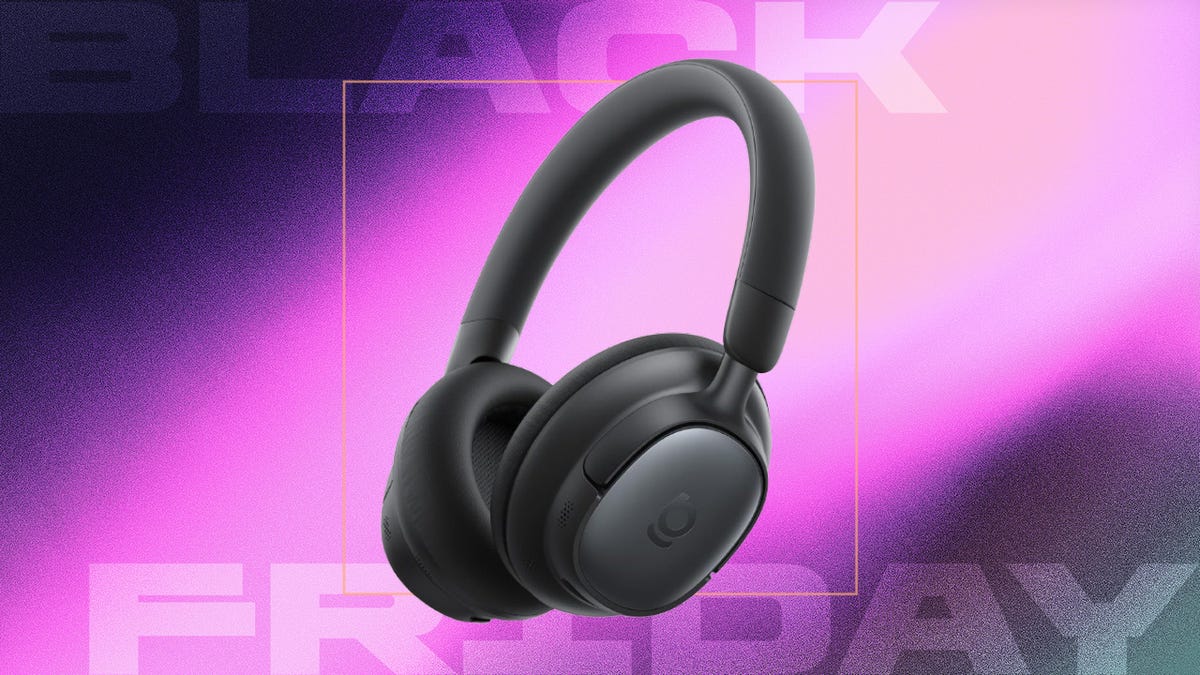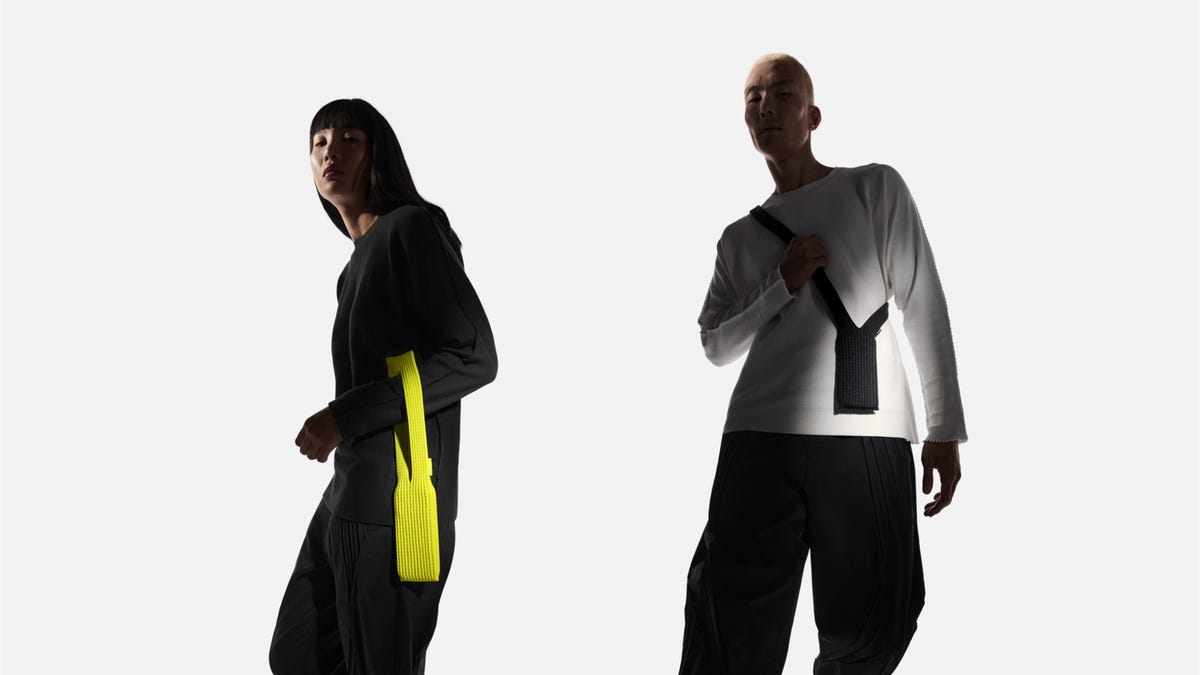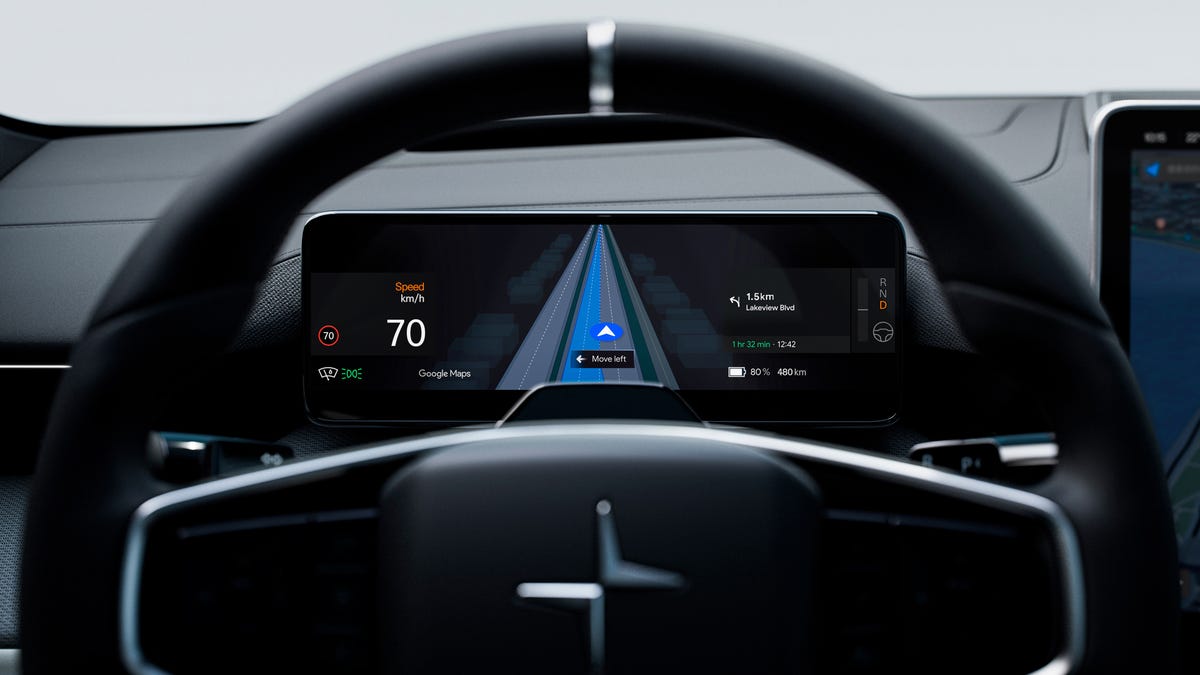Technologies
6G Phones Won’t Just Be Fast. They’ll Plug You Into an ‘Always-Sensing Network’
We’re edging closer to yet another technology transformation. «6G will provide context» to help AI agents get things done, says Qualcomm CEO Cristiano Amon.

You’ve seen the progression on your phone screen over the years: 3G technology was followed by 4G, and now, probably more often than not, your phone is connecting over 5G. On the ever-closer horizon is, you guessed it, 6G.
Unlike with the Gs that preceded it, 6G has been flying under the radar. It’s less a source of consumer hype and more a point of discussion around the telecoms industry and the networks it relies upon.
But that isn’t quite the full story.
During his keynote address at Web Summit on Tuesday, Cristiano Amon, CEO of chipmaker Qualcomm, hinted that 6G networks, which are scheduled to launch in the US in the early 2030s, might have something exciting to offer us after all.
«6G is designed for AI,» he said at the event in Lisbon, Portugal. It will boost the speed of connectivity and sense what’s around us, providing context to the AI agents that are coming to do things on our behalf.
Following this tantalizingly brief comment, I was keen to find out more about what 6G cellular technology might do for the average smartphone user, so I asked Amon to elaborate on what we can expect from this next-gen network technology.
Every generation of network tech has been the gateway to a new experience, Amon said. 2G was about making sure everyone in the world can have a mobile phone, 3G was for connecting the phone to the internet, 4G turned our mobile device into computers. 5G has allowed us to have critical connectivity and unlimited data.
What then, can 6G offer us above and beyond what we already have?
The obvious answer: even faster speeds and even lower latency. But that takes on particular importance given the coming shift in how we’ll interact with our AI-enabled devices, Amon said.
One of the big benefits of the more advanced large language models we’re now using — the foundational technology that underlies AI chatbots like ChatGPT, Gemini, Claude and Copilot — is that they can understand our natural speech, making voice the easiest and most obvious way for us to chat with our AI agents.
«Voice is going to become important again,» Amon told me. «We’re going to use voice to connect to agents and to all the different devices, so it’s going to even further improve the response time, and it’s going to provide you faster connectivity.»
6G will drive an ‘always-sensing network’
Qualcomm has been an early proponent of the potential of AI agents, which can independently carry out tasks on your behalf. Its chips are already beginning to power agentic experiences across phones, wearables, computers and cars.
If we’re relying on our voices to interact accurately and confidently with agents, which might be making payments or emailing a client on our behalf, absolutely seamless connectivity will be critical to ensure nothing gets lost in translation. This is where 6G will come into its own, according to Amon.
«The devices we interact with are going to understand what we say, what we hear, what we see,» he said. «6G will provide context.» We’ll be surrounded by an «always-sensing network» that will allow our agents to predict what we’ll do and need next based on what’s going on around us, he added.
On stage, Amon gave the example of applying AI to a radio — 6G, like its predecessors, is a radio communication technology — so that it can detect disturbances in the radio frequency environment in a room. It could, for instance, detect changes to a baby’s breathing while it’s in the crib without requiring a wearable monitor. Another, perhaps less appealing example, is mass facial recognition, which would allow for the simultaneous identification of everyone in a room.
«I know it sounds a little bit scary,» said Amon. But the 6G network understanding our context will be key to enabling AI agents to operate, he added.
With at least five years until 6G is due to launch in the US and with AI continuing to develop at a rapid pace, it’s hard to predict exactly what will happen when the two technologies finally collide. But one thing is for sure: 6G will power new experiences — some of which might not have been invented yet.
Disclosure: Katie Collins traveled to Lisbon as a guest of Web Summit to serve as a panel moderator. Her reporting from the event was independent of that role.
Technologies
This New Car Feature Uses AI to Keep You From Missing Your Exit
Google Maps’ live lane guidance is being integrated into Polestar’s head-up display.
Technologies
Hurry to Nab the Baseus Bowie MH1 Headphones for Over Half Off With This Early Black Friday Deal
This deal drops the price of this premium pair to just $47, but this discount ends soon.

High-quality noise-canceling headphones can cost a pretty penny, especially if you are after adaptive ANC, all-day comfort, and a reliable battery life. Most options with all these features sit well over $100, but we just found a way to score a premium pair for less than $50.
Amazon has a solid early Black Friday deal on the Baseus Bowie MH1 headphones. You can get them for 20% off right now, which drops the price to $80. But stack that with the $25 on-page coupon and use the promo code 8JWTGEUN at checkout, and you slash another $33 off. That brings the final price down to just $47, which is a steal considering all the features you are going to enjoy.
The headphones come with cloud-soft protein leather earcups with resilient memory foam for cloud-like comfort. The pair is capable of blocking up to 99.8% of noise with –48 dB deep noise cancellation, and it adapts to your surroundings as needed.
Hey, did you know? CNET Deals texts are free, easy and save you money.
The 36mm drivers and full-range LCP diaphragms give you clear, rich sound no matter what you listen to. In addition, with Baseus Immersive Spatial Acoustics, the audio surrounds you for a more natural listening experience. For clearer calls, the headphones also pack 5-mic sound sensors with AI-powered voice enhancement and wind-noise reduction. You won’t have to repeat yourself constantly.
Battery-wise, you get up to 80 hours of playtime with ANC off, and 55 hours with it on. A quick 10-minute top-up can also get you up to an additional 10 hours of playback, which is great for when you’re out and about.
HEADPHONE DEALS OF THE WEEK
-
$200 (save $151)
-
$199 (save $150)
-
$329 (save $100)
-
$328 (save $72)
Why this deal matters
High-end audio gear doesn’t come cheap. This deal takes over 50% off a powerful pair of headphones, making the upgrade easy. It won’t last long, though, so it’s best to snap it up sooner rather than later.
Join Our Daily Deals Text Group!
Get hand-picked deals from CNET shopping experts straight to your phone.
By signing up, you confirm you are 16+ and agree to receive recurring marketing messages at the phone number provided. Consent is not a condition of purchase. Reply STOP to unsubscribe. Msg & data rates may apply. View our Privacy Policy and Terms of Use.
Technologies
Apple’s iPhone Pocket Is a $230 Gadget Mankini. We Tried It Out to Size It Up
The stretchy fabric satchel for your iPhone makes a fashion statement. CNET’s Bridget Carey wore it and waved it, and dubbed the iPhone Pocket «Apple’s Labubu.»

Remember iPod socks? Those brightly colored woolly wraps that swaddled your iPod like it was an infant? Apple sold them starting in 2004 for the better part of a decade. In things we did not have on our bingo card for 2025, Apple has decided now is the time to bring back the knitwear for the latest iPhones.
Meet the iPhone Pocket: a glorified yarn sling for your phone and whatever else you can cram in there without stretching the poor thing into oblivion. If we’re being catty, it does look a bit like a sweater you shrank in the wash and then tried to stretch out. Or maybe a mankini.
But hey, it could just be the zhuzh you’re looking for.
The iPhone Pocket is on sale now, but you can’t walk into just any old Apple Store and get it. Apple is selling it in 10 select shopping locales, like SoHo in New York, Regent Street in London, Marché Saint-Germain in Paris and Orchard Road in Singapore. Everyone else will just have to order it online like it’s from Temu.
High fashion does not come cheap. The short strap design will set you back $150, while the long strap version costs $230.
Don’t miss any of our unbiased tech content and lab-based reviews. Add CNET as a preferred Google source.
Getting our hands on an iPhone Pocket
On Friday, the first day the iPhone Pocket went on sale, CNET’s Bridget Carey picked up one each of the long and short versions (blue and pink, respectively) at the Apple Store in fashion-centric SoHo, the only Apple retail store selling it in the US. Customers there could go hands-on with the woven slings, giving the Pocket a stretch or sample slipping their iPhones into it.
The longer, crossbody model held Carey’s phone securely, and she felt confident wearing it around New York throughout the day. She also put it through some impromptu testing. «I’ve been swinging it around and stuffing other items in it,» she said. «I’ve even tied it around my neck as a scarf and put it on my foot as a sock.»
So far, the Pocket has kept its shape. The material has some spring to it, and Carey thinks she could take it on errands with her kids and not have to worry. But it’s not tough enough for the washing machine. Instructions inside say the Pocket is to be hand washed and should not go in the dryer.
One of Apple’s suggestions for accessorizing with the iPhone Pocket, if you’re not doing crossbody, is to tie it onto the bag you’re carrying. That was not Carey’s first inclination. «I’m not sure I would feel comfortable hanging my phone like a keychain on my bag,» she said. «But I still wanted to get a short Pocket because, well, I wanted to have a bit of fashion history. And I love pink.»
If she does go the bag-Pocket route, Carey said, «I’ll hook my Labubu off it, too. After all, this is Apple’s Labubu now, a hard-to-find fashion accessory that hangs on your bag.»
The fashion sense of the iPhone Pocket
Apple designed the iPhone Pocket in collaboration with fashion brand Issey Miyake, the designer behind the endless supply of black turtlenecks worn by Steve Jobs (and an Apple employee uniform that almost happened).
I’m no fashion expert, but fashion writer Tiffany Lo is, and she told me «the design embodies Issey Miyake’s signature pleat pattern and the idea of crafting it from a single piece of fabric. It’s instantly recognizable.»
The iPhone Pocket is a stretchy 3D-knitted pouch with ribbed textures that hugs your iPhone. It’s see-through when you tug at it, so you can glimpse your lockscreen. But Apple wants you to put more than your iPhone in this accessory. You’re encouraged to slip in AirPods, lip balm, a key fob, breath mints or any other pocketable item. The shorter iPhone Pocket is more like a wristlet bag, while the longer one turns your iPhone into a crossbody accessory.
The wearable tech pouch is certainly a fashion statement if you decide to drape it across your torso, perhaps like a sash of questionable decisions. Whether you carry it in-hand, tie it to your bag, or sling it on like a fashion-forward postman, you will definitely get some looks, perhaps confused ones. The short strap version comes in eight colors: lemon, mandarin, purple, pink, peacock, sapphire, cinnamon and black. The long strap comes only in those latter three colors.
So who is the iPhone Pocket for? Lo says it «could appeal to younger generations thanks to the design that allows users to wear it as a crossbody.» Given that Apple released crossbody straps for all its iPhones earlier this year, maybe it has some insights into what Gen Z really wants. Is it worth the $230, or even $150? Yes or no, it’s a far cry from the $29 the iPod socks went for back in the day.
-

 Technologies3 года ago
Technologies3 года agoTech Companies Need to Be Held Accountable for Security, Experts Say
-

 Technologies3 года ago
Technologies3 года agoBest Handheld Game Console in 2023
-

 Technologies3 года ago
Technologies3 года agoTighten Up Your VR Game With the Best Head Straps for Quest 2
-

 Technologies4 года ago
Technologies4 года agoBlack Friday 2021: The best deals on TVs, headphones, kitchenware, and more
-

 Technologies4 года ago
Technologies4 года agoVerum, Wickr and Threema: next generation secured messengers
-

 Technologies4 года ago
Technologies4 года agoGoogle to require vaccinations as Silicon Valley rethinks return-to-office policies
-

 Technologies4 года ago
Technologies4 года agoOlivia Harlan Dekker for Verum Messenger
-

 Technologies4 года ago
Technologies4 года agoiPhone 13 event: How to watch Apple’s big announcement tomorrow

